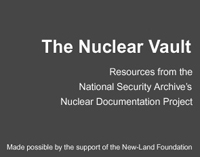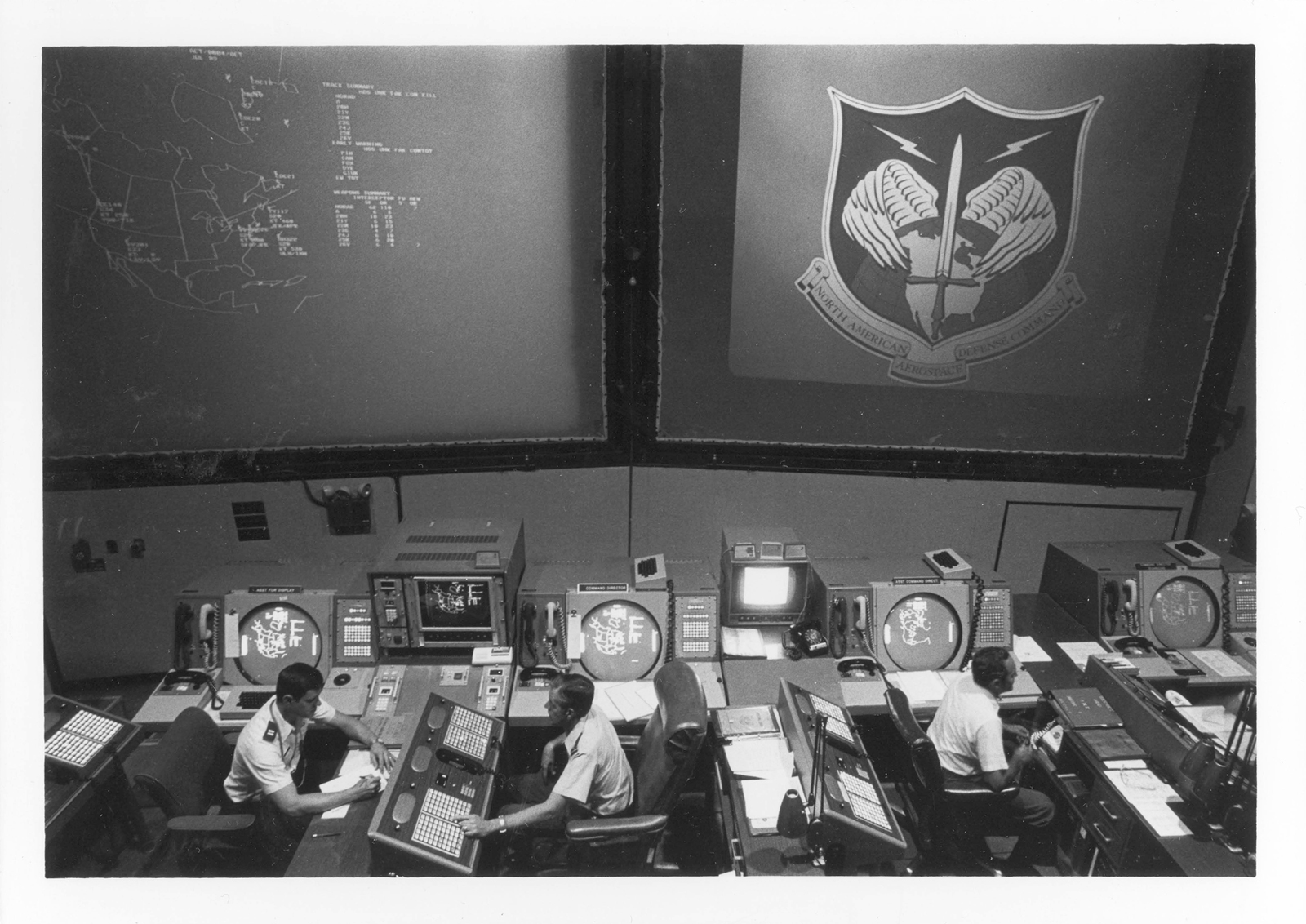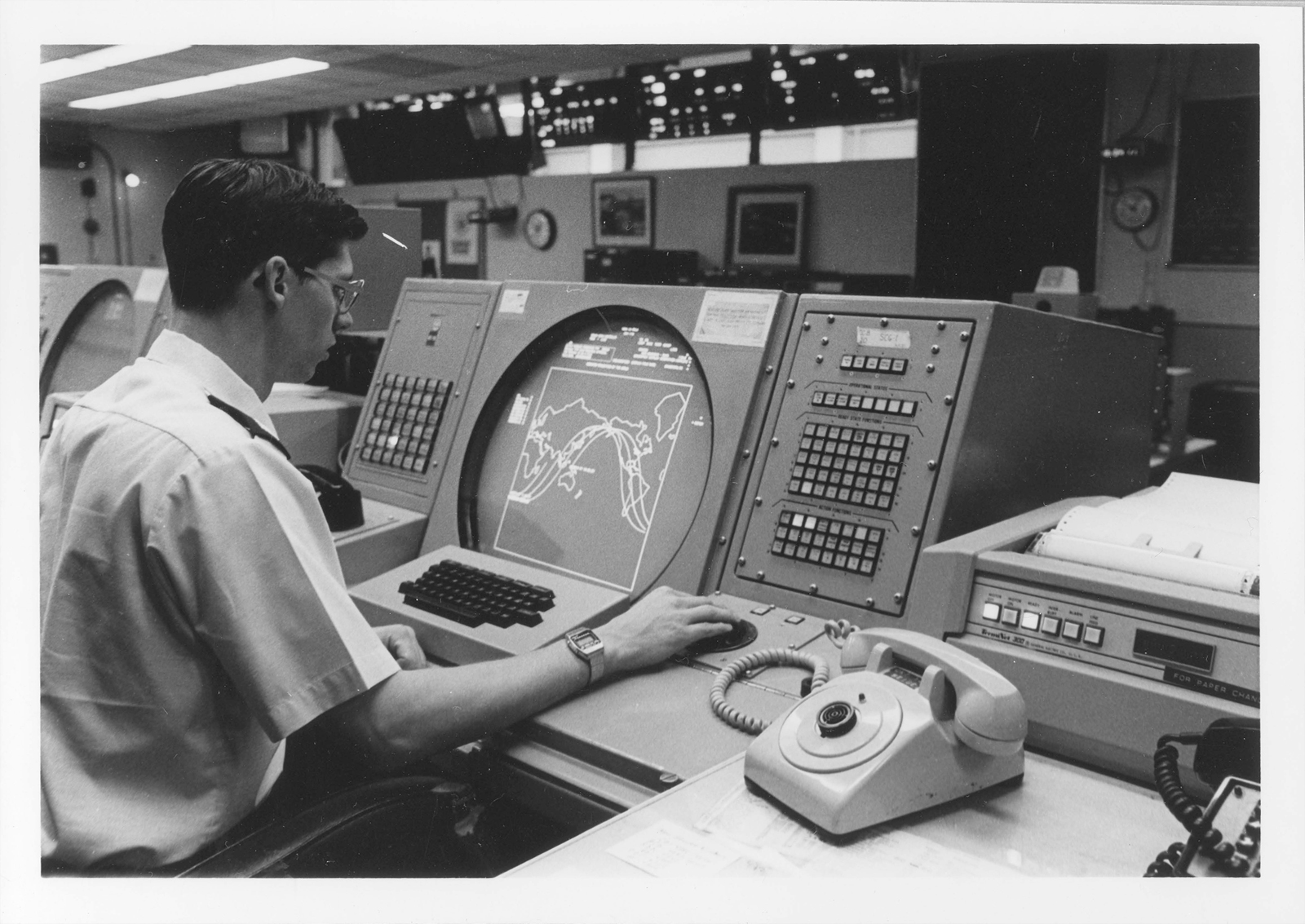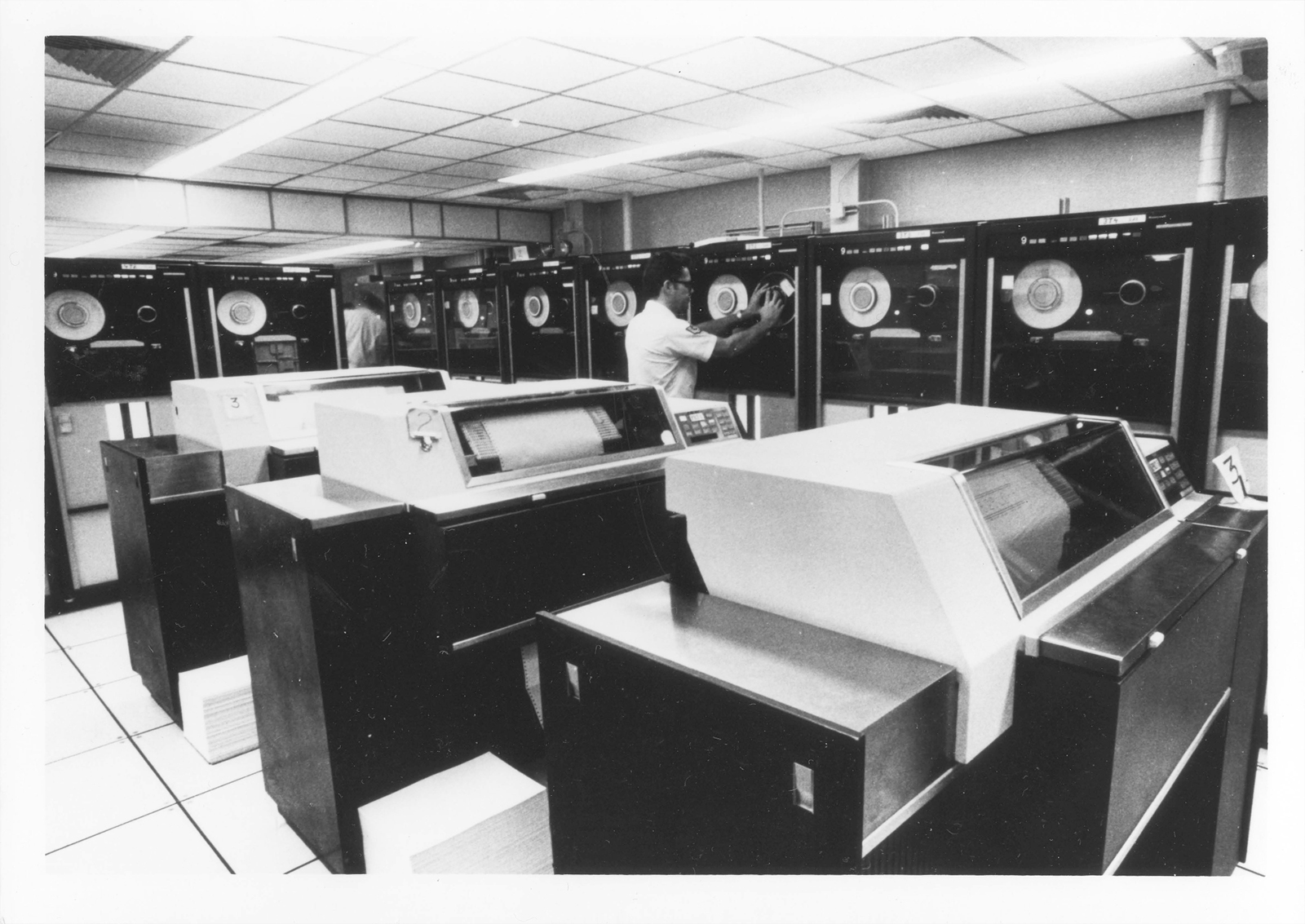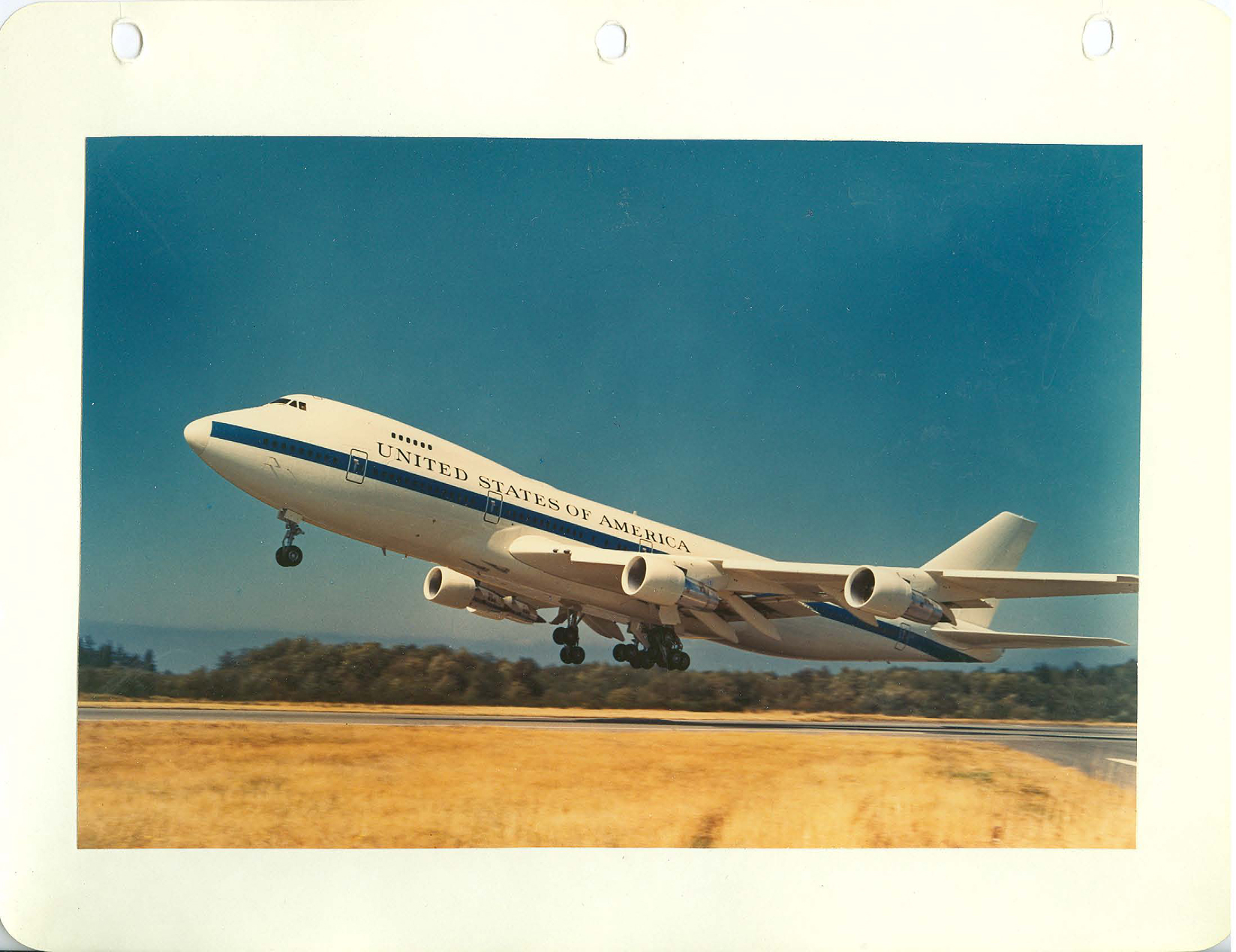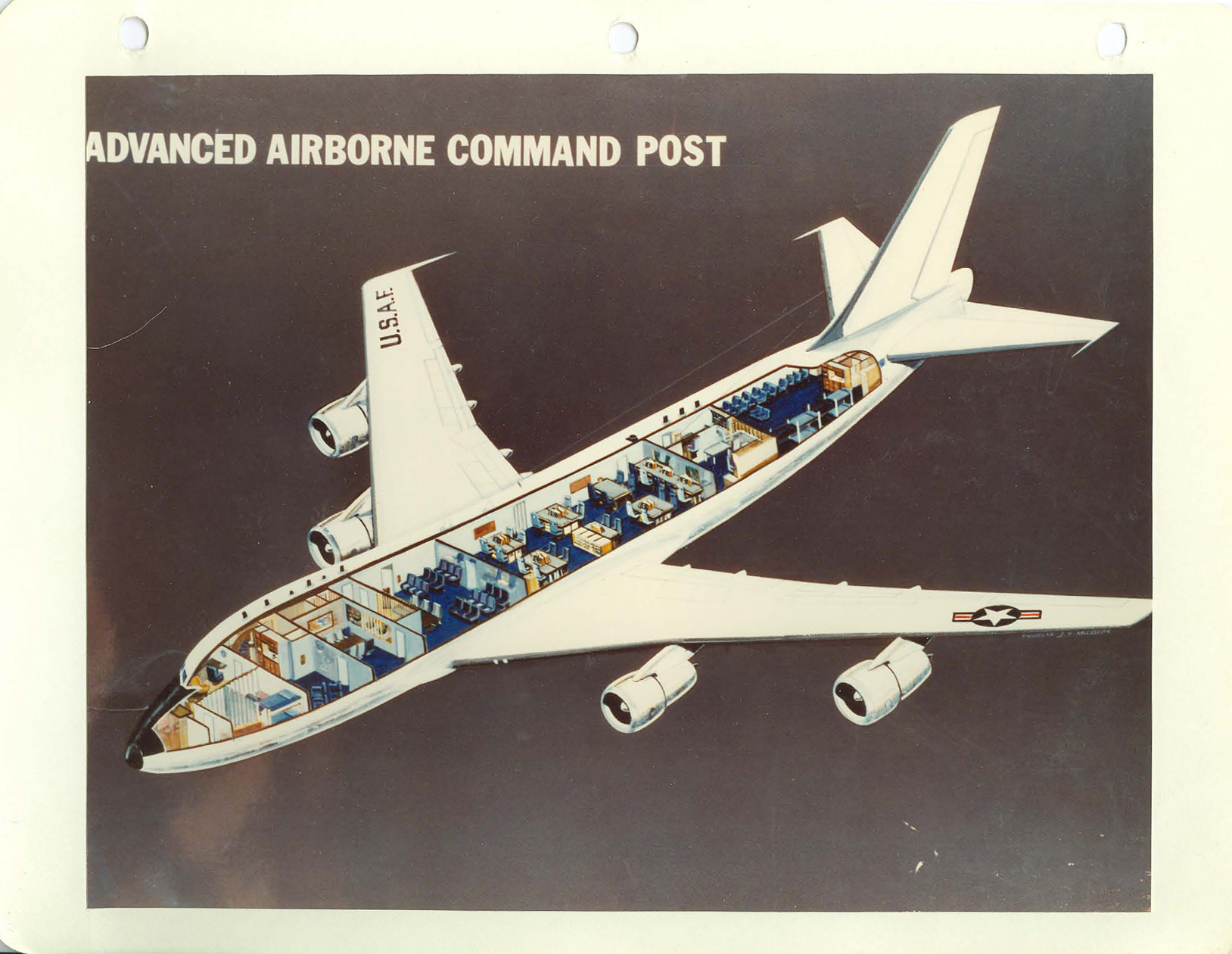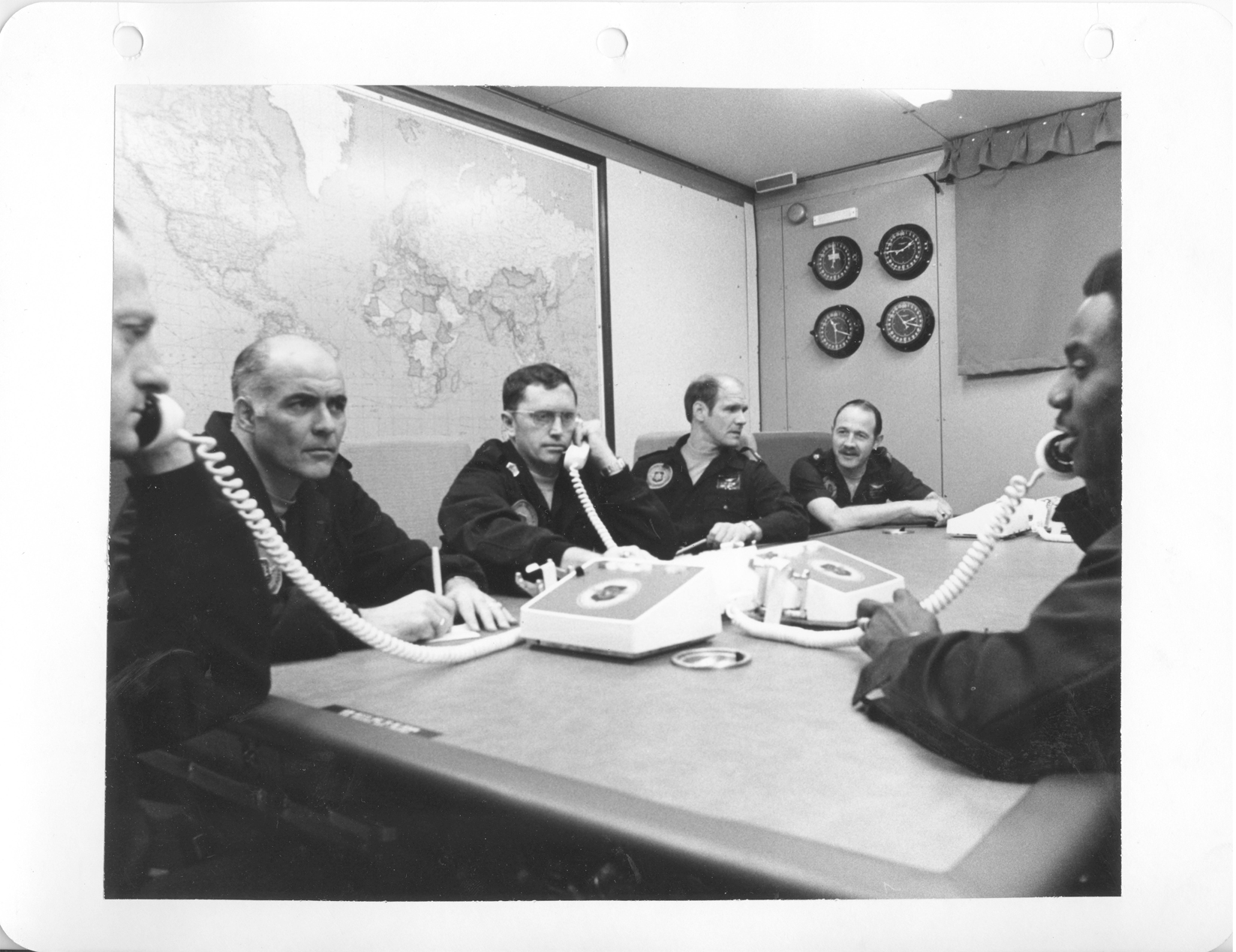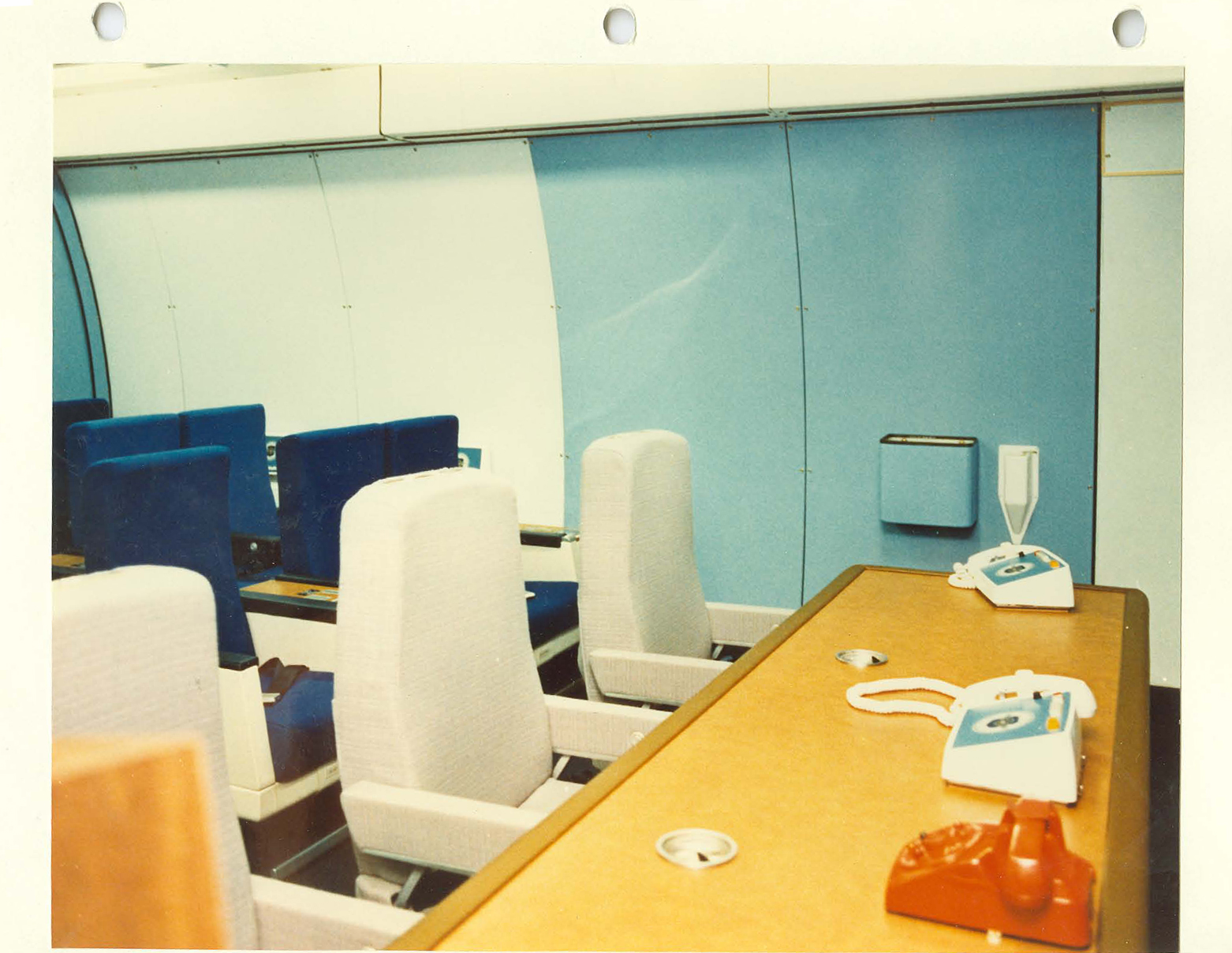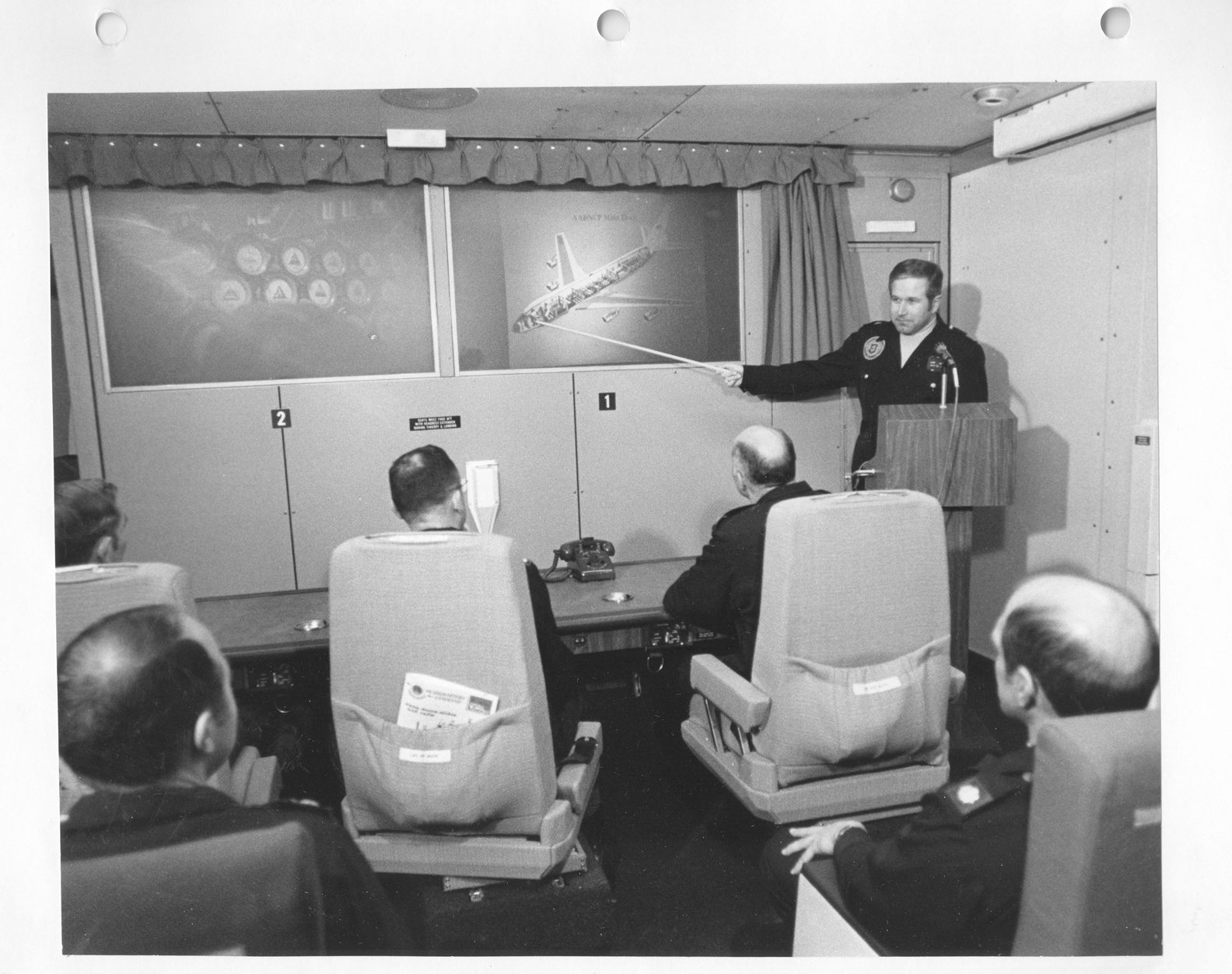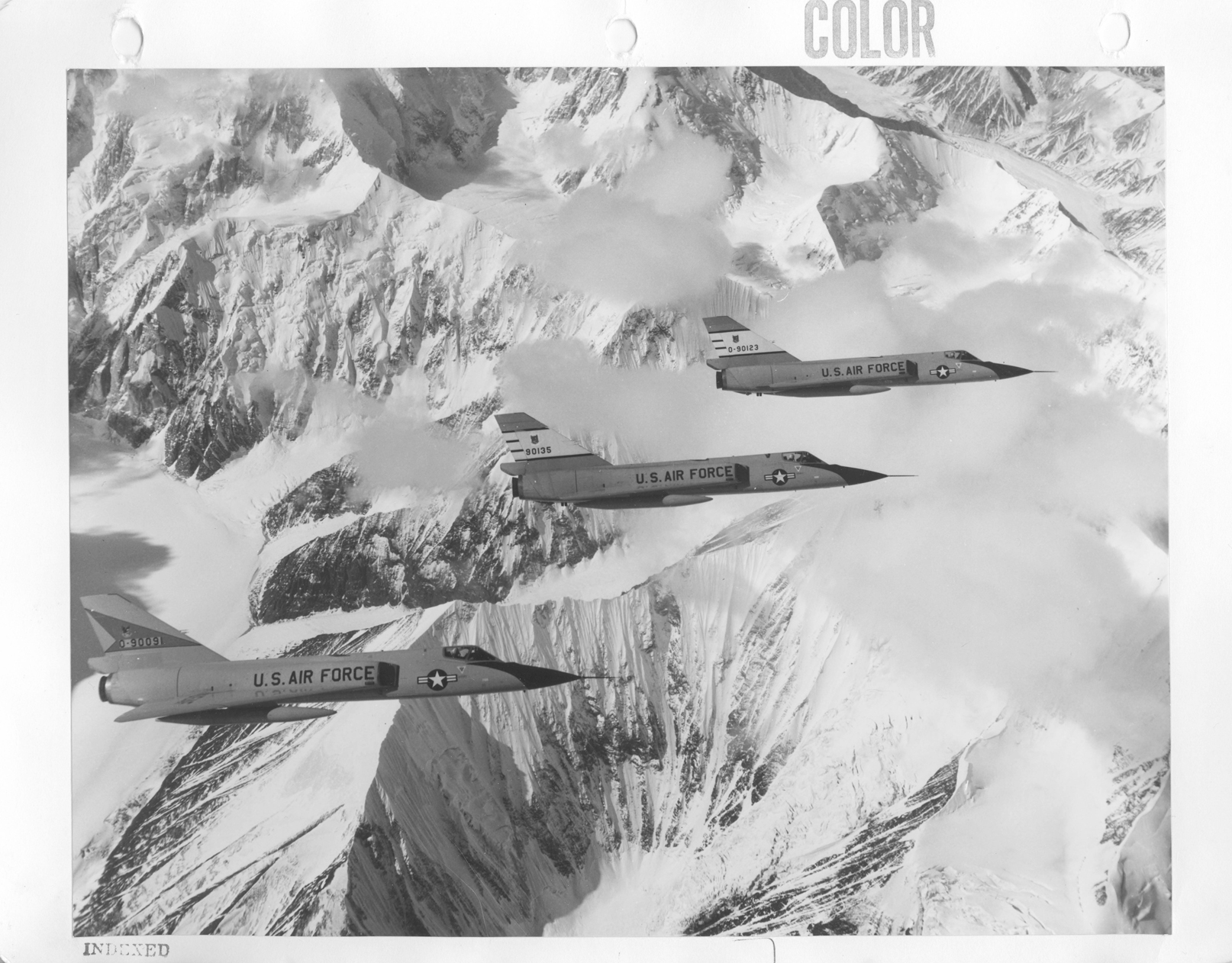home | about | documents | news | publications | FOIA | research | employment | search | donate | mailing list
The 3 A.M. Phone Call
False Warnings of Soviet Missile Attacks during 1979-80 Led to Alert Actions for U.S. Strategic Forces
Zbigniew Brzezinski Received 3 a.m. Phone Call Warning of Incoming Nuclear Attack
Declassified Documents Shed Light on Soviet Diplomatic Reactions and Internal Pentagon Review
Secretary of Defense Advised President Carter that "We Must Be Prepared for the Possibility [of] Another False Alert" but "Human Safeguards" Would Prevent a Crisis
National Security Archive Electronic Briefing Book No. 371
Posted - March 1, 2012
For more information contact:
William Burr - 202/994-7000 or nsarchiv@gwu.edu
|
Washington, D.C., March 1, 2012 – During the 2008 campaign, Democratic presidential hopefuls Hillary Clinton and Barack Obama debated the question: who was best suited to be suddenly awakened at 3 a.m. in the White House to make a tough call in a crisis. The candidates probably meant news of trouble in the Middle East or a terrorist attack in the United States or in a major ally, not an 'end of the world' phone call about a major nuclear strike on the United States. In fact at least one such phone call occurred during the Cold War, but it did not go to the President. It went to a national security adviser, Zbigniew Brzezinski, who was awakened on 9 November 1979, to be told that the North American Aerospace Defense Command (NORAD), the combined U.S.–Canada military command–was reporting a Soviet missile attack. Just before Brzezinski was about to call President Carter, the NORAD warning turned out to be a false alarm. It was one of those moments in Cold War history when top officials believed they were facing the ultimate threat. The apparent cause? The routine testing of an overworked computer system.
Recently declassified documents about this incident and other false warnings of Soviet missile attacks delivered to the Pentagon and military commands by computers at NORAD in 1979 and 1980 are published today for the first time by the National Security Archive. The erroneous warnings, variously produced by computer tests and worn out computer chips, led to a number of alert actions by U.S. bomber and missile forces and the emergency airborne command post. Alarmed by reports of the incident on 9 November 1979, the Soviet leadership lodged a complaint with Washington about the "extreme danger" of false warnings. While Pentagon officials were trying to prevent future incidents, Secretary of Defense Harold Brown assured President Jimmy Carter that false warnings were virtually inevitable, although he tried to reassure the President that "human safeguards" would prevent them from getting out of control.
Among the disclosures in today's posting:
- Reports that the mistaken use of a nuclear exercise tape on a NORAD computer had produced a U.S. false warning and alert actions prompted Soviet Communist Party General Secretary Leonid Brezhnev to write secretly to President Carter that the erroneous alert was "fraught with a tremendous danger." Further, "I think you will agree with me that there should be no errors in such matters."
- Commenting on the November 1979 NORAD incident, senior State Department adviser Marshal Shulman wrote that "false alerts of this kind are not a rare occurrence" and that there is a "complacency about handling them that disturbs me."
- With U.S.-Soviet relations already difficult, the Brezhnev message sparked discussion inside the Carter administration on how best to reply. Hard-liners prevailed and the draft that was approved included language ("inaccurate and unacceptable") that Marshal Shulman saw as "snotty" and "gratuitously insulting."
- Months later, in May and June 1980, 3 more false alerts occurred. The dates of two of them, 3 and 6 June 1980, have been in the public record for years, but the existence of a third event, cited in a memorandum from Secretary of Defense Brown to President Carter on 7 June 1980, has hitherto been unknown, although the details are classified.
- False alerts by NORAD computers on 3 and 6 June 1980 triggered routine actions by SAC and the NMCC to ensure survivability of strategic forces and command and control systems. The National Emergency Airborne Command Post (NEACP) at Andrews Air Force Base taxied in position for emergency launch, although it remained in place. Because missile attack warning systems showed nothing unusual, the alert actions were suspended.
- Supposedly causing the incidents in June 1980 was the failure of a 46¢ integrated circuit ("chip") in a NORAD computer, but Secretary of Defense Brown reported to a surprised President Carter that NORAD "has been unable to get the suspected circuit to fail again under tests."
- In reports to Carter, Secretary cautioned that "we must be prepared for the possibility that another, unrelated malfunction may someday generate another false alert." Nevertheless, Brown argued that "human safeguards"?people reading data produced by warning systems--ensured that there would be "no chance that any irretrievable actions would be taken."
Background
For decades, the possibility of a Soviet missile attack preoccupied U.S. presidents and their security advisers. Because nuclear hostilities were more likely to emerge during a political-military confrontation (such as Cuba 1962) the likelihood of a bolt from the blue was remote but Washington nevertheless planned for the worst case. Under any circumstances, U.S. presidents and top military commanders wanted warning systems that could provide them with the earliest possible notice of missile launches by the Soviet Union or other adversaries. By the early 1960s, the Pentagon had the Ballistic Missile Early Warning System (BMEWs) that could provide about 15 minutes of warning time. By the mid-to-late1960s, forward-scatter systems (so-called "Over the Horizon Radar") could detect missile launches within five to seven minutes from while, the 474N system could give three-to-seven minutes of warning of launches from submarines off the North American coast. [1]
By the end of the 1960s, the United States was getting ready to deploy the Defense Support Program satellites which use infrared technology to detect plumes produced by missile launches. DSP could be used to tell whether missile launches were only tests or whether they signified a real attack by detecting number of missile launches and trajectory. This provided25 to 30 minutes of warning along with information on the trajectory and ultimate targets of the missiles. As long as decision-makers were not confronting the danger of a SLBM launch, the DSP would give them some time to decide how to retaliate.
In 1972, the North American Aerospace Command (NORAD) began to network warning systems into at "interlinked system" operated at its headquarters in Cheyenne Mountain, Colorado.[2] A complex computer-based system always bore the risk of failure, break-downs, or errors. Even before networking emerged, false warnings emerged as early as 1960 when a BMEWs radar in Greenland caught "echoes from the moon," which generated a report of a missile attack which was quickly understood to be false (see document 1). During the Cuban Missile Crisis false warning episodes occurred, some of them involving NORAD, that were virtually unknown for many years.[3] If there were significant incidents during the years that followed, it remains to be learned. But once the networked systems were in place, the possibility that they would typically produce false warnings became evident.
The Events of 1979-1980
"As he recounted it to me, Brzezinski was awakened at three in the morning by [military assistant William] Odom, who told him that some 250 Soviet missiles had been launched against the United States. Brzezinski knew that the President's decision time to order retaliation was from three to seven minutes. Thus he told Odom he would stand by for a further call to confirm Soviet launch and the intended targets before calling the President. Brzezinski was convinced we had to hit back and told Odom to confirm that the Strategic Air Command was launching its planes. When Odom called back, he reported that 2,200 missiles had been launched?it was an all-out attack. One minute before Brzezinski intended to call the President, Odom called a third time to say that other warning systems were not reporting Soviet launches. Sitting alone in the middle of the night, Brzezinski had not awakened his wife, reckoning that everyone would be dead in half an hour. It had been a false alarm. Someone had mistakenly put military exercise tapes into the computer system." -- Robert M. Gates. From the Shadows: The Ultimate Insider's Story of Five Presidents and How they Won the Cold War (New York: Simon & Schuster, 1996),114.
The series of alarming incidents and telephone phone calls recounted by former NSC staffer (and later CIA director and future Secretary of Defense) Robert Gates took place in the middle of the night on 9 November 1979. Because of the potentially grave implications of the event, the episode quickly leaked to the media, with the Washington Post and The New York Times printing stories on what happened. According to press reports, based on Pentagon briefings, a NORAD staffer caused the mistake by mistakenly loading a training/exercise tape into a computer, which simulated an "attack into the live warning system." This was a distortion because it was not a matter of a "wrong tape," but software simulating a Soviet missile attack then testing NORAD's 427M computers "was inexplicably transferred into the regular warning display" at the Command's headquarters. Indeed, NORAD's Commander-in-chief later acknowledged that the "precise mode of failure could not be replicated."[4]
The information on the display simultaneously appeared on screens at SAC headquarters and the National Military Command Center (NMCC), which quickly led to defensive actions: NORAD alerted interceptor forces and 10 fighters were immediately launched. Moreover, the National Emergency Airborne Command Post (NEACP), used so the president could control U.S. forces during a nuclear war, was launched from Andrews Air Force Base, although without the president or secretary of defense.
Some of this information did not reach the public for months, but at least one reporter received misleading information about how high the alert went. According to the New York Times' sources, the warning was "deemed insufficiently urgent to warrant notifying top Government or military officials." Apparently no one wanted to tell reporters (and further scare the public) that the phone call went to President's Carter's national security adviser Zbigniew Brzezinski.
The behind-the-scenes story became more complicated because the Soviet leadership was worried enough to lodge a complaint with Washington. The Cold War tensions had already been exacerbated during the previous year and this could not help (nor could an impending Kremlin decision to invade Afghanistan). On 14 November, party leader Leonid Brezhnev sent a message via Ambassador Anatoly Dobyrnin expressing his concern about the incident which was "fraught with a tremendous danger." What especially concerned Brezhnev were press reports that top U.S. leaders had not been informed at the time about the warning. The Defense Department and Brzezinski took hold of the reply to Brezhnev's message which senior State Department adviser Marshall Shulman saw as "gratuitously snotty" (for example, language about the "inaccurate and unacceptable" Soviet message). The Soviets were indeed miffed because they later replied that the U.S. message was not "satisfactory" because it had taken a polemical approach to Moscow's "profound and natural concern."
About seven months later, U.S. warning systems generated three more false alerts. One occurred on 28 May 1980; it was a minor harbinger of false alerts on 3 and 6 June 1980. According to the Pentagon, what caused the malfunctions in June 1980 was a failed 46¢ micro-electronic integrated circuit ("chip") and "faulty message design." A computer at NORAD made what amounted to "typographical errors" in the routine messages it sent to SAC and the National Military Command Center (NMCC) about missile launches. While the message usually said "OOO" ICBMs or SLBMs had been launched, some of the zeroes were erroneously filled in with a 2, e.g. 002 or 200, so the message indicated that 2, then 200 SLBMs were on their way. Once the message arrived at SAC, the command took survivability measures by ordering bomber pilots and crews to their stations at alert bombers and tankers and to start the engines.
No NORAD interceptors were launched so something had been learned from the November episode, but SAC took same precautionary measures. The Pacific Command's airborne command post ("Blue Eagle") was launched for reasons that remain mysterious.[5] NEACP taxied in position at Andrews Air Force Base, but it was not launched as in November. That missile warning sensors (DSP, BMEWs, etc) showed nothing amiss made it possible for military commanders to call off further action. According to a Senate report, NORAD ran its computers the next 3 days in order to isolate the cause of the error; the "mistake was reproduced" in the mid-afternoon of 6 June with the similar results and SAC took defensive measures.[6]
When Harold Brown explained to President Carter what had happened and what was being done to fix the system, he cautioned that "we must be prepared for the possibility that another, unrelated malfunction may someday generate another false alert." This meant that "we must continue to place our confidence in the human element of our missile attack warning system." Brown, however, did not address a problem raised by journalists who asked Pentagon officials, if another false alert occurred, whether a "chain reaction" could be triggered when "duty officers in the Soviet Union read data on the American alert coming into their warning systems." A nameless U.S. defense official would give no assurances that a "chain reaction" would not occur, noting that "I hope they have as secure a system as we do, that they have the safeguards we do."
How good the safeguards actually were remains an open question. While Secretary of Defense Brown acknowledged the "possibility" of future false alerts, he insisted on the importance of human safeguards in preventing catastrophes. Stanford University professor Scott Sagan's argument about "organizational failure" is critical of that optimism on several counts. For example, under some circumstances false alerts could have had more perilous outcomes, e.g. if Soviet missile tests had occurred at the same time or if there were serious political tensions with Moscow, defense officials might have been jumpier and launched bomber aircraft or worse. Further, false warnings were symptomatic of "more serious problems with the way portions of the command system had been designed." Yet, defense officials have been reluctant to acknowledge organizational failings, instead blaming mistakes on 46¢ chips or individuals inserting the wrong tape. Treating the events of 1979 and 1980 as "normal accidents" in complex systems, Sagan observes that defense officials are reluctant to learn from mistakes and have persuaded themselves that the system is "foolproof."[7]
Bruce Blair also sees systemic problems. Once a "launch-under--attack" strategic nuclear option became embedded in war planning policy during the late 1970s, he sees the weakening of the safeguards that had been in place, e.g., confirmation that a Soviet nuclear attack was in progress or had already occurred. One of the arguments for taking Minuteman ICBMs off their current high alert status (making virtually instantaneous launch possible) has been that a false warning, combined with an advanced state of readiness, raises the risk of accidental nuclear war. The risk of false alerts/accidental war is one of the considerations that is prompting other anti-nuclear activists, including Daniel Ellsberg, to protest at Vandenberg Air Force Base against the Minuteman ICBM program and the continued testing of Minutemen.[8]
The Soviet nuclear command and control system that developed during the 1980s provides an interesting contrast with the U.S.'s. While the United States emphasized "human safeguards" as a firewall, the "Perimeter" nuclear warning-nuclear strike system may have minimized them. In large part, it was a response to Soviet concern that a U.S. decapitating strike, aimed at the political leadership and central control systems, could cripple retaliatory capabilities. Reminiscent of the "doomsday machine" in Stanley Kubrick's Dr. Strangelove or How I Learned to Stop Worrying and Love the Bomb, Perimeter could launch a semi-automatic nuclear strike under specified conditions, for example, no contact with political or military leaders, atomic bombs detonating, etc. If such conditions were fulfilled, a few military personnel deep in an underground bunker could launch emergency command and control rockets which in turn would transmit launch orders to ICBMs in their silos. According to David Hoffman's Pulitzer-prize winning The Dead Hand, when Bruce Blair learned about Perimeter, he was "uneasy that it put launch orders in the hands of a few, with so much automation." While the system may have been operational as late as the early 1990s, only declassification decisions by Russian authorities can shed light on Perimeter's evolution.[9]
According to Bruce Blair, writing in the early 1990s, warning system failures continued after 1980, although they did not trigger alert measures.[10] The U.S. nuclear incidents that have received the most attention have not been false warnings, but events such as the Air Force's accidental movement of nuclear-tipped cruise missiles from Minot AFB to Barksdale AFB in 2007 and the mistaken transfer of Minuteman nose-cone assemblies to Taiwan in 2006. In any event, more needs to be learned about the problem of false warnings during and after the Cold War and pending declassification requests and appeals may shed further light on this issue.
READ THE DOCUMENTS
Document 1: Excerpts on warning systems and October 1960 false from Institute for Defense Analyses, The Evolution of U.S. Strategic Command and Control and Warning, 1945-1972, Study S-468 (Arlington, Virginia, 1975), op Secret, excerpts: pp. 216-218, 339-347, and 419-425.
Source: Digital National Security Archive
This invaluable history provides useful background on the missile attack warning systems--BMEWs and DSP, among others--that became available during the 1960s and 1970s. One chapter provides context for the creation of the National Emergency Airborne Command Post [NEACP] that became operational in 1975.
Document 2: State Department cable 295771 to U.S. Embassy Moscow, "Brezhnev Message to President on Nuclear False Alarm," 14 November 1979, Secret
Source: State Department FOIA release
The Soviets surely read about the November 1979 false warning in the U.S. press, but whether their intelligence systems had already detected it is not so clear. In any event, Soviet General Secretary Brezhnev privately expressed his "extreme anxiety" to President Carter a few days after U.S. press reports appeared on 11 November 1979. The message was closely held, not only as "Nodis" ("no distribution" except to a few authorized people), but also as "Cherokee," a special information control established when Dean Rusk was Secretary of State (Rusk was born in Cherokee Country, GA) and used by subsequent Secretaries of State.
Document 3: Brigadier General Carl Smith, USAF, Military Assistant to the Secretary of Defense, to William Odom, Military Assistant to the Assistant to the President for National Security Affairs, "Proposed Oral Message Response," 16 November 1979
Source: Defense Department FOIA release
Officials at the Pentagon drafted a reply that became the basis for the message that was eventually sent to the Kremlin. Giving very little quarter, the text asserted that the Kremlin had used bad information and that its message made "inaccurate and unacceptable" assertions, that Moscow had little to worry about because U.S. forces were under reliable control, and that it did not "serve the purposes of peace or strategic stability" to make a fuss about the recent incident.
Document 4: Excerpt from State Department memorandum to Secretary of State with attached memo "Late Supplement to VBB [Vance, Brown, Brzezinski] Item on Brezhnev Oral Message on False Alert," circa 16 November 1979, secret, excerpt (as released by State Department)
Source: State Department FOIA release
Excerpts from a memorandum to Secretary of State Vance to prepare for a routine coordinating meeting with Secretary of Defense Brown and national security adviser Brzezinski, suggest that senior State Department officials opposed rushing a response to the Soviet message. Although they agreed that the "tone" of Brezhnev's message was "unacceptable," they opposed giving the Soviets ammunition to exploit, wanted to discuss carefully the "merits" of the Soviet case, and did not want to appear too "cavalier" about the incident because that could make U.S. allies nervous when they were already discussing new U.S. nuclear deployments in Western Europe.
Document 5: Marshal Shulman memo to Secretary of State Cyrus Vance, 16 November 1979, Top Secret
Source: State Department FOIA release
Vance's adviser on Soviet policy Marshal Shulman had signed off on the memorandum on the reply to the Soviets, but had further thoughts. Believing that the U.S. could not really fault the Soviets for worrying about such episodes, Shulman noted that false alerts not a "rare occurrence" and worried about "complacency" toward the problem. Seeing the proposed reply as "kindergarten stuff," he suggested more straightforward language. Whether this paper actually went to Vance is unclear, given the line crossing out the text.
Document 6: Marshal Shulman memo to Cyrus Vance, 21 November 1979, with draft message attached, nonclassified,
Source: State Department FOIA release
The debate over the reply continued, and an alternate version was drafted, but the one that Vance accidentally approved was the version that Shulman and others in the Department and the NSC found "gratuitously insulting and inappropriate for the Carter/Brezhnev channel." Shulman's advice came too late; even though Vance reportedly disliked the reply, he did not want to revisit the issue. Instead of handling the memorandum at the Secretary of State level, Vance's top advisers wanted it to be delivered at somewhat lower level such as by Assistant Secretary of State George Vest. The version that is attached to Shulman's note is a milder version of what was sent (see document 8).
Document 7: State Department cable 307013 to the U.S. Mission to the North Atlantic Treaty Organization, "TNF: Soviets and the False Missile Alert," 28 November 1979, Secret
Source: State Department FOIA release
Before the Soviets received the reply, the State Department briefed permanent representatives to the North Atlantic Council to counter any attempts by Moscow to "cast doubt on the reliability of our nuclear control" and thereby influence the outcome of the ongoing debates over prospective theater nuclear forces [TNF] deployments in NATO Europe. This cable includes briefing information on what happened and also to demonstrate the "the redundant and complete nature of our well-established confirmation and control mechanisms." The message was reasonably accurate about the cause of the false warning, not an operator error but the mistaken transmission of part of a test tape. Yet, as Scott Sagan has pointed out, this message wrongly asserted that the NORAD interceptors were launched because of an earlier alert; nothing of that sort had occurred.[11]
Document 8: State Department cable 312357 to U.S. Embassy Moscow, "U.S. Oral Message on Purported Alert of American Strategic Forces," 4 December 1979, Confidential
Source: State Department FOIA release
On 4 December 1979, Robert Louis Barry, an official at the Bureau of European Affairs, at a lower level than Assistant Secretary Vest, finally conveyed the reply to the Soviet embassy's Minister Counselor Aleksandr Bessmertnykh (later an ambassador to the United States). Unlike the original Soviet message, it was not a head of state communication, Carter?to-Brezhnev, suggesting that relations were quite frosty in this pre-Afghanistan period. Possibly the version of the reply that Shulman saw as "snotty," it described Brezhnev's original message as "inaccurate and unacceptable." Ignoring Brezhnev's concern about "no errors," the message insisted that U.S. strategic forces were under "reliable control."
Document 9: State Department cable 326348 to U.S. Embassy Moscow, "Supplementary Soviet Statement on U.S. Strategic Alert," 19 December 1979, Confidential
Source: State Department FOIA release
Apparently surprised by the U.S. reply, the Soviets took issue with it in a "non-paper" delivered to the State Department by their chargé. Arguing that they had not raised the issue to engage in "polemics," the Soviets asserted that a "profound and natural concern" instigated their original message.
Document 10: Message, HQ/NORAD to Assistant Secretary of Defense C3 and Joint Chiefs of Staff, 20 December 1979, Secret
Source: Donation by Scott Sagan, Stanford University
Sen. Gary Hart (D-Co), a member of the Senate Arms Services Committee, was concerned about what had happened on 9 November and visited NORAD for a briefing. While Hart wondered why the President and the Secretary of Defense had not been informed at the time, Lt. General Bruce K. Brown and other NORAD briefers explained that almost from the outset of the episode, NORAD officials saw a "a very high probability" that the warning was false. Hart also wondered why development testing on the NORAD 427M computer had been allowed; the briefers explained that NORAD officials recognized there was a problem and had recommended an auxiliary computer system as an "isolated" means for testing but the request had been denied because of "lack of funds." Early in the message the briefers explained that they had stayed away from discussing the connection between the 427M computers and the Worldwide Military Command and Control System (WWMCCS). What may have explained that problem was ongoing concern at the Government Accounting Office and elsewhere that the WWMCCS lacked the capacity to meet NORAD's mission requirements.
Document 11: Letter, Lt. General James V. Hartinger, Commander-in-chief, Aerospace Defense Command, to General Lew Allen, Chief of Staff, U.S. Air Force, 14 March 1980, Secret, attachments not included
Source: Donation by Scott Sagan, Stanford University
In a letter to the Air Force Chief of Staff, NORAD commander General Hartinger summarized the command's report on the 9 November incident. That report is currently the subject of a declassification request to the Air Force. Not sure whether the incident was caused by a "human error, computer error, or combination of both," Hartinger reported that "stringent safeguards have been established to preclude a repetition."
Document 12: Secretary of Defense Harold Brown to President Carter, "False Missile Alert," 7 June 1980, Top Secret, excised copy
Source: Defense Department FOIA release, currently under appeal
Hartinger's confidence was misplaced. Massively and overzealously excised by reviewers at the Defense Department, this memorandum discloses that U.S. warning systems produced 3 false alerts during May and June 1980. The May event, described in document 19, was a minor precursor to the 3 June incident.
Document 13: Department of Defense "Fact Sheet," n.d. [circa 7/8 June 1980], Secret
Source: Defense Department FOIA release
This document reviews the false alerts on 3 and 6 June of Soviet ICBM and SLBM attacks, what apparently caused them, what SAC bomber crews did in response to the warnings, and the measures that were taken to diagnosis what happened and to ensure that it did not happen again. Corrective measures included a separate computer system for testing operations (which had been rejected before because of insufficient funds[12]) and a determination by CINCNORAD that the U.S. is "under attack" before anything beyond basic "precautionary measures" are taken.
After the first incident on 3 June, SAC, NORAD, and the National Military Command Center established a "continuous voice telephone conference" to ensure that nothing went amiss.
The authors of the "Fact Sheet" emphasized the importance of the "human safeguards" noting that officers at NORAD were aware that electronic warning systems were working as usual and that the displays showed no unusual activity. An article in The New York Times published on 18 June ("Missile Alerts Traced to 46¢ Item") included details on the response to the warning not mentioned in the "Fact Sheet," asserting that missile crews went on a "higher state of alert" and that submarine crews were also informed. The Times' writers, however, were not aware that NEACP "taxied into position" as part of an emergency routine.
Document 14: Assistant Secretary for Politico-Military Affairs Reginald Bartholomew to Secretary of State [Muskie], "False Alarm on Soviet Missile Attack," 10 June 1980, Limited Official Use
Source: State Department FOIA release
Reginald Bartholomew sent a briefing memo on the incidents to Secretary Muskie, noting that "these incidents inevitably raise concerns about the dangers of an accidental nuclear war." The media had already picked up on the story[13], so there was some possibility of a Soviet complaint, although "the tone may well be sharper" in light of the tensions over the Soviet invasion of Afghanistan
Document 15: Secretary of Defense Brown to President Carter, "False Missile Alerts," 13 June 1980, Secret, Excised copy
Source: Defense Department FOIA release
In this memorandum, Brown provided suggestions on how to answer media questions about the false warning problem. Treating false warnings as a byproduct of computerized warning technology, he emphasized that "human safeguards" ensured that there would be "no chance that any irretrievable actions would be taken." While "any missile warning indications", false or otherwise, would force SAC to take "precautionary action" by raising the bomber force's alert status, Brown did not believe that anything more would happen.
Document 16: Assistant Secretary of Defense for Communications, Command, Control, and Intelligence Gerald P. Dinneen http://www.nap.edu/openbook.php?record_id=9052&page=1 to Secretary and Deputy Secretary of Defense, "False Missile Alerts Information Memorandum," 14 June 1980, Top Secret, excised copy
Source: Defense Department FOIA release
Assistant Secretary of Defense Dinneen (former director of Lincoln Laboratories) apprised Brown on the efforts to identify what had caused the false alerts and what could be done to fix the problem. A task force studying NORAD computer problems had identified a "suspect integrated circuit" as the most likely culprit (although they were not 100 percent certain). Various measures had been taken or under consideration but the details have been excised. A few days later Dinneen would brief the press on the failure of the 46¢ chip.
Document 17: Memorandum of Conversation, "U.S.-Soviet Relations," 16 June 1960
Source: State Department FOIA release
During a meeting between Secretary of State Muskie and Ambassador Dobrynin, the latter asked about the recent "nuclear alerts," which Foreign Minister Andrei Gromyko had already raised with U.S. Ambassador to Moscow, Thomas Watson. Muskie downplayed the problem on the grounds that the false signals would not create a "danger of war" because of the "interposition of human judgment."
Document 18: Secretary of Defense to President Carter, "False Missile Alerts," 12 July 1980, Top Secret, excised copy, attached to memorandum from Zbigniew Brzezinski to Brown, "False Alerts," 17 July 1980, with annotations by Jimmy Carter
Source: Defense Department FOIA release
Here Brown updated Carter on the explanations for the recent false alert, corrective measures (e.g. special alarms when warning messages arrived so they could undergo confidence checks), and reactions by Congress and the public. Carter approved Brown's report with an OK but was surprised (see handwritten exclamation mark) by the statement that "NORAD has been unable to get the suspected circuit to fail again under tests." That conflicts with a statement in the Senate report that what caused the 6 June incident was an attempt to reproduce the earlier false alert, but perhaps subsequent attempts failed. Brown reminded Carter that "we must be prepared for the possibility that another, unrelated malfunction may someday generate another false alert."
Document 19: Office of NORAD Deputy Chief of Staff, Operations, Captain Victor B. Budura, J-3, "Talking Points on 3/6 June False Indications," 21 July 1980, Secret
Source: Donation by Scott Sagan, Stanford University
This NORAD document provides a chronology of the episodes of 28 May, 3 June, and 6 June 1980, although leaving out some events, such as the role of NEACP in the 3 June incident.
Document 20: U.S. Pacific Command, Annual History, 1980, excerpt, pages 201-202 (2nd page of excerpt unreadable), Secret
Source: Donation by Scott Sagan, Stanford University
This excerpt from a Pacific Command history discusses the launching of the Pacific Command airborne command post, "Blue Eagle," during the 3 June false episode. As the chronology in document 19 indicates, the warning was determined to be false before "Blue Eagle" had taken off, but it stayed airborne for several hours.[14]
NOTES
[1] The following draws on the Institute for Defense Analyses' History of Strategic Command Control and Warning, 1945-1972 (excerpts in document 1) and Jeffrey Richelson, America's Space Sentinels: DSP Satellites and National Security (Lawrence: University Press of Kansas, 1999)
[2] Joseph T. Jockel, Canada and NORAD: 1957-2007: A History (Montreal: McGill-Queen's University Press, Program, 2007), 95. This book and Jockel's earlier, No Boundaries Upstairs: Canada, the United States, and the Origins of North American Air Defence, 1945-1958 (Vancouver: University of British Columbia Press, 1987) are valuable studies on the origins and development of NORAD. A comparable U.S. study on NORAD history remains to be prepared, although Christopher Bright's Continental Air Defense in the Eisenhower Era: Nuclear Antiaircraft Arms and the Cold War (New York: Palgrave Macmillan) is helpful on nuclear issues in NORAD's early years.
[3] Scott Sagan, The Limits of Safety: Organizations, Accidents, and Nuclear Weapons (Princeton: Princeton University Press, 1993). 99-100 and 126-133.
[4] Sagan, Limits of Safety, 228-229, 238.
[5] Ibid., 232, 244-246. See also Report of Senator Gary Hart and Senator Barry Goldwater to the Committee on the Armed Services United States Senate, Recent False Alerts from the Nation's Missile Attack Warning System (Washington, D.C.: U.S. Government Printing Office, 1980), 5-6, and Government Accounting Office, MASAD 81-30, "NORAD's Missile Warning System: What Went Wrong?"
[6] Ibid, 7.
[7] Sagan, 225-249 passim.
[8] Bruce Blair, The Logic of Accidental Nuclear War (Washington, D.C.: Brookings Institution, 1993), 193.
[9] David E. Hoffman, The Dead Hand The Untold Story of the Cold War Arms Race and Its Dangerous Legacy (New York: Doubleday, 2009): 152-154, 422-423.
[10] David E. Hoffman, "Cold War Doctrines Refuse to Die," The Washington Post, 15 March 1998,
[11] Sagan, Limits of Safety, 240-241.
[12] Ibid., 239.
[13] For example, the Washington Post published a story by George C. Wilson, "Computer Errs, Warns of Soviet Attack on U.S.," on 6 June 1980.
[14] Sagan, Limits of Safety, 244.
